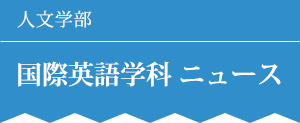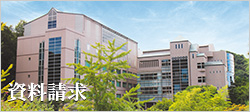8月に2週間、ベトナムで環境問題や教育問題について学ぶGSEコースの海外研修、Global Village Field Experienceが実施されました。
GSEの学生たちはどんな冒険に遭遇し、何を学んだのでしょうか。引率したRobert Dormer先生が紹介します。

8人のGSE生が無事にベトナムでの研修を終え、新しい経験や考えを身につけて帰ってきました。Global Village Field Experienceはまず前期の授業でベトナムの国際化、持続可能な環境問題などの解決法、文化的な違いなどについて掘り下げ、特にクアンナム省について学習することから始まります。8月16日から17日にかけて、学生たちは関西空港へ向かい、さらに飛行機でフエへと飛び立ちました。写真からもわかるように、学生たちはとってもワクワクしています!
Although tired, 8 students have recently returned from Vietnam with a great deal of new ideas and experiences fresh in their minds. The Global Village Field Experience program began in the classroom, where we used Vietnam as an example to learn about key global issues such as globalization, sustainability, cultural differences, and start to build some in-depth knowledge of the specific contexts in and around Quang Nam province. On August 16th and 17th, the group set off first for Kansai Airport, and then by air to Hue. As you can see from the photos, the students were understandably excited.

ベトナムでもっとも古い首都の一つであるフエに到着すると、学生たちは初めての景色、音、匂いに驚いていました。親切で楽しいガイドであるフイさんのおかげで、私たちはなぜフエの歴史地区がユネスコの世界遺産に登録されているのかを学びました。その後、ポメロという果物の農家へ行き、どのように農業を行っているのか話を聞きました。
Arriving in Hue, one of the ancient capital cities of Vietnam, students were immediately struck by the many new and different sights, sounds, and smells. I'm personally very happy to report that a multitude of new and exciting tastes were a constant theme throughout the visit! Under the informed, kind, and always funny leadership of our guide Huy, we were able to understand why Hue's old district is a UNESCO World Heritage Site. Later on, we visited a traditional pomelo home, and spoke with the family about their largely self-sustaining vegetable farming.

次の日、多くの孤児たちを愛情あふれる家族へと送り出していることで高い評価を受けているドク・ソン・パゴダ孤児院へ行きました。学生たちは子供たちとそうめんを調理し、折り紙を折ることで日本文化の紹介をしました。パゴダの尼僧たちは子供たちと一緒にオーガニック食品を作り、それを売ることで利益を上げています。私たちもそこでおいしいヴィーガン(卵や乳製品も使わないベジタリアン料理)のランチをいただきました。広島女学院大学の学園祭、あやめ祭では学生がホットチョコレートを販売し、その売り上げをこの施設に寄付しています。施設の子供たちが作ったお香もあやめ祭で見ることができますよ。詳しい情報を知りたい人はぜひウェブサイトをのぞいてみてください。https://www.ducsonorphans.org/
The next day in Hue began with a visit to the Duc Son Pagoda orphanage, which is simply an amazing institution with a wonderful record of providing loving homes to many disadvantaged children. Our students were able to share Japanese culture by cooking somen and teaching children how to make some origami patterns. The nuns at the pagoda, along with the children, farm a lot of organic foods, and sell the surplus for a profit. We were able to join them for a healthy vegan lunch which was delicious. There will be a small fund-raising sale of hot chocolate at the school festival for this amazing organisation, and you can see some of the incense made by the children. If you want to know more you can visit their website at https://www.ducsonorphans.org/.

次に向かったのはもう一つの世界遺産ホイ・アンです。伝統的なベトナムの建物やフランス植民地時代の建物、中国や日本の建物が立ち並んでいるこの街を巡りました。次の日は池やマングローブに囲まれたカム・サムを訪れ、その地域の資源を活用した持続可能な地域発展計画であるAsset-based community developmentについて学びました。
Our next destination was Hoi An, which has an old town which is entirely listed as another World Heritage Site. We were taken on a tour throughout this pedestrianised city, which has ancient Vietnamese, French colonial, Chinese, and Japanese buildings (the Japanese bridge can be seen in the pictures below). The next day we visited the Camh Than community project based around the river basin and mangroves. This was a great opportunity for the students to learn about ABC development.


その後、私たちは現地の少数民族の暮らすチャム島へ移りました。保護されたサンゴ礁を眺めたり、シュノーケリングをすることで、学生たちは授業で学んだ環境保護の「持続可能性」(sustainability)を実生活の中で体験することができました。さらにそのコミュニティでホームステイし、持続可能な観光とはどんなものなのかを目の当たりにしました。
We then moved on to Cham island, home to one of the indigenous minority groups, by speedboat, which was quite exciting. Through viewing the Marine Protected Area, and even snorkelling around a protected coral reef, students could see in real life some of the concepts about sustainability we had been working with in class. We also stayed the night in community-based homestays, which are excellent examples of sustainable tourism, and had a long walk around the community the next day.

最後に私たちはダナンに滞在し、ソン・トラ半島の保護区でコミュニティがその地域を発展させるために行っている取り組みを学び、その活動がアカアシドゥクラングールという猿の保護に直結していることを知りました。さらに学生たちは現地の学生と一緒にさまざまな文化や自然を巡るグループワークに参加しました。次の日にはベトナムの学生たちと一緒にフォン・ナム村を訪れ、伝統的な生活やその価値について学びました。ベトナム最後の夜、私たちはベトナムの学生たちと一緒にディナーを食べ、ドラゴン・ブリッジから花火を見ました!次の日に私たちは日本に、広島に戻ってきました。どの学生も一生懸命に努力し、冒険し、学ぶことができました。
After returning to the mainland, we spent the remainder of our time in DaNang. First, we had a tour around the protected area of the Son Tra peninsular, where we learned how a small group had achieved an amazing amount of community cooperation, leading the government to change their practice of development in the area. The results were made very clear to the students when we viewed the Red Douc monkeys thriving in their natural habitat. The following day, students met and worked with groups of students from the local university, where they went on an exciting scavenger hunt which took them to many cultural and natural highlights. The next day, with their new friends, they had a guided tour of Phong Nam village, and ancient and traditional home, with the leader of the village showing us their way of life and values. In disbelief that our final evening in Vietnam had arrived, students from Japan and Vietnam had a final dinner, before heading to the Dragon Bridge to see the fireworks and fire breathing! The next day we returned to Japan, and finally, Hiroshima. Every participant deserves praise for their hard work, adventure, and determination.




